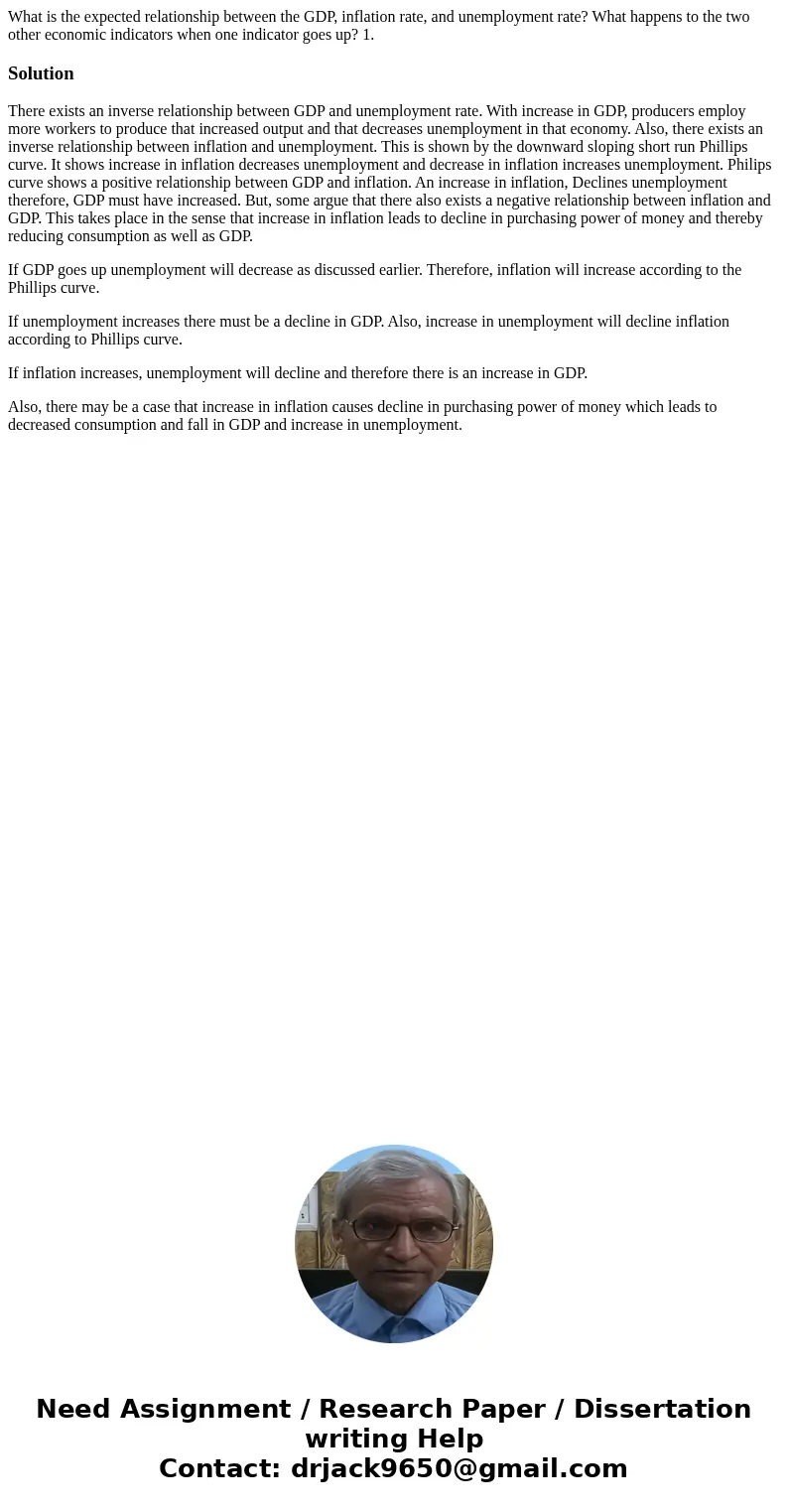What is the expected relationship between the GDP inflation
Solution
There exists an inverse relationship between GDP and unemployment rate. With increase in GDP, producers employ more workers to produce that increased output and that decreases unemployment in that economy. Also, there exists an inverse relationship between inflation and unemployment. This is shown by the downward sloping short run Phillips curve. It shows increase in inflation decreases unemployment and decrease in inflation increases unemployment. Philips curve shows a positive relationship between GDP and inflation. An increase in inflation, Declines unemployment therefore, GDP must have increased. But, some argue that there also exists a negative relationship between inflation and GDP. This takes place in the sense that increase in inflation leads to decline in purchasing power of money and thereby reducing consumption as well as GDP.
If GDP goes up unemployment will decrease as discussed earlier. Therefore, inflation will increase according to the Phillips curve.
If unemployment increases there must be a decline in GDP. Also, increase in unemployment will decline inflation according to Phillips curve.
If inflation increases, unemployment will decline and therefore there is an increase in GDP.
Also, there may be a case that increase in inflation causes decline in purchasing power of money which leads to decreased consumption and fall in GDP and increase in unemployment.

 Homework Sourse
Homework Sourse